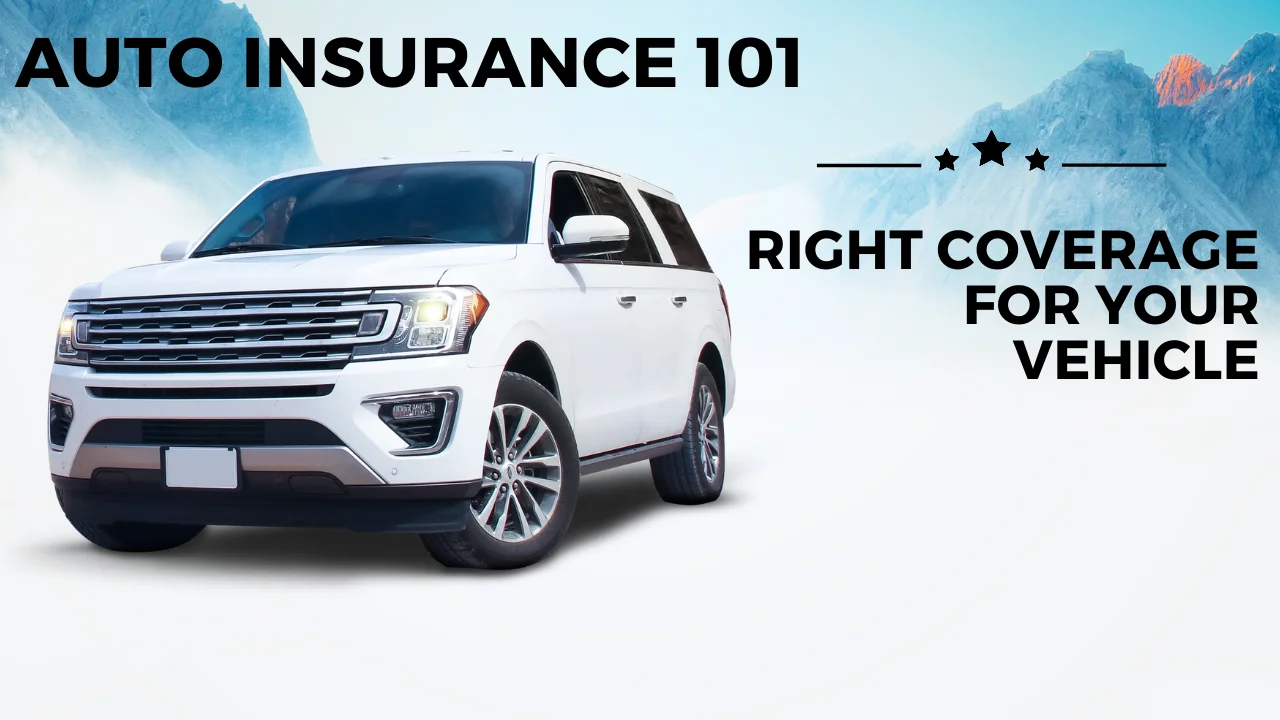Introduction
Auto Insurance 101 In the intricate landscape of vehicle ownership, one paramount decision stands out: selecting the ideal auto insurance coverage. The vast array of options can be overwhelming, making it imperative to grasp the essentials of auto insurance and how to choose the optimal coverage that can act as a safeguard against potential financial and legal challenges.
Understanding Auto Insurance Coverage
H1: Types of Auto Insurance Coverage
H2: Liability Coverage
Auto Insurance 101 Liability coverage, often referred to as the cornerstone of auto insurance policies, functions as a safety net in scenarios where you are at fault in an accident. It steps in to cover the costs of injuries and damages caused to another party. This encompassing coverage includes medical expenses, property damage, and even legal fees incurred due to the accident.
H2: Collision Coverage
Auto Insurance 101 Diving deeper, we encounter collision coverage, a facet of auto insurance that proves invaluable when faced with the aftermath of a collision. Regardless of culpability, this coverage addresses the repair or replacement expenses for your vehicle. When unforeseen collisions occur, whether it’s a fender-bender or a more severe accident, collision coverage is there to cushion the financial blow.
H2: Comprehensive Coverage
Auto Insurance 101 Navigating through the complexities of auto insurance, comprehensive coverage emerges as the guardian against a multitude of non-collision incidents. From theft to vandalism, natural disasters to falling objects, comprehensive coverage blankets your vehicle in scenarios beyond the realm of collisions. This well-rounded protection ensures you’re shielded against an array of potential threats.
H2: Personal Injury Protection (PIP)
Auto Insurance 101 Personal Injury Protection, commonly referred to as PIP, takes the concept of coverage a step further by safeguarding you and your passengers in times of adversity. Irrespective of fault, PIP covers medical expenses, lost wages, and other related costs stemming from an accident. This additional layer of protection ensures that the physical and financial well-being of everyone involved is secured.
H1: Assessing Your Needs
H2: Evaluate Your Vehicle
Auto Insurance 101 Moving forward, delving into the process of assessing your insurance needs begins with an evaluation of your vehicle. Factors such as its age, make, model, and overall value play a pivotal role in determining the most suitable coverage. Newer, more high-end vehicles might necessitate comprehensive coverage, while older vehicles might find ample protection in liability coverage.
H2: Personal Financial Situation
Auto Insurance 101 Equally vital is an introspective exploration of your personal financial landscape. Before selecting coverage, it’s imperative to assess your financial capacity to handle deductibles and premiums. While opting for a higher deductible can potentially lead to reduced premiums, it’s essential to ensure that you’re financially equipped to manage the deductible should a claim arise.
H1: Factors Affecting Coverage
H2: Driving Habits
Auto Insurance 101 Unveiling the layers of personalized auto insurance, your driving habits emerge as influential determinants in the coverage equation. Factors such as your daily commute, the frequency of your journeys, and the distances covered are integral in ascertaining the type and extent of coverage you require. A comprehensive coverage might be more fitting for frequent drivers, while occasional drivers might find solace in liability coverage.
H2: State Requirements
Intricacies within auto insurance extend beyond personal preferences, intertwining with legal obligations set by individual states. Each state mandates its own minimum requirements for auto insurance coverage. It’s crucial to be well-versed in your state’s stipulations to ensure compliance with the law while crafting your coverage plan.
H2: Additional Drivers
Furthermore, the inclusion of additional drivers in your coverage plan demands consideration. If family members or other individuals will be operating your vehicle, their driving records and habits should be taken into account. Assessing their impact on your coverage is crucial in creating a comprehensive insurance plan that extends protection to all potential operators of your vehicle.
H1: Comparing Quotes
H2: Shop Around
Embarking on the journey to procure suitable auto insurance demands a proactive approach. It entails obtaining quotes from an array of insurance providers to facilitate a comprehensive comparison of coverage options and pricing. Online comparison tools prove invaluable in streamlining this process, empowering you to make an informed decision.
H2: Consider Bundling
Another avenue worth exploring is the realm of bundling. Many insurance providers offer enticing discounts to individuals who opt to bundle their auto insurance with other policies such as home insurance. This synergy not only leads to potential financial savings but also streamlines the management of your insurance portfolio.
H1: Review and Adjust Regularly
H2: Life Changes
The dynamism of life necessitates consistent scrutiny of your insurance coverage. Milestones such as marriage, relocation, or the advent of children can significantly alter your insurance needs. As life unfolds, it’s imperative to review and adjust your coverage accordingly to ensure it aligns seamlessly with your evolving circumstances.
H2: Policy Renewal
Utilizing policy renewal periods as checkpoints for coverage evaluation is a prudent approach. During these junctures, take the time to revisit your coverage plan, reevaluate its compatibility with your needs, and make any necessary adjustments. Policy renewal becomes not just a procedural occurrence but a pivotal opportunity to fine-tune your insurance protection.
Conclusion
The labyrinth of auto insurance unwinds to reveal a landscape where informed choices reign supreme. The task of selecting the appropriate auto insurance coverage transcends the realm of mere obligation; it metamorphoses into a strategic maneuver that secures your financial and vehicular well-being. By acquainting yourself with the manifold facets of coverage, evaluating your unique requirements, and engaging in thorough comparisons, you empower yourself to navigate the roads with confidence.
FAQs
Q1: What is the minimum auto insurance required by law?
A: The minimum auto insurance required varies by state but typically includes liability coverage.
Q2: Can I change my coverage mid-policy?
A: Yes, you can usually adjust your coverage mid-policy, but there might be certain terms and conditions.
Q3: Does auto insurance cover rental cars?
A: Some policies might offer coverage for rental cars, but it’s best to check with your insurance provider.
Q4: How do deductibles work?
A: A deductible is the amount you need to pay out of pocket before your insurance coverage kicks in for a claim.
Q5: Is comprehensive coverage worth it for an older car?
A: It depends on the value of the car and your personal preferences. Consider the cost of coverage versus the value of the vehicle.










